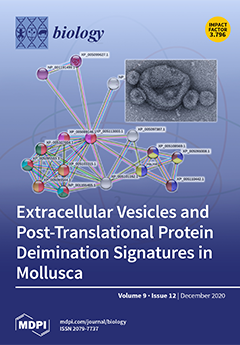Open AccessArticle
Effects of Propranolol on Growth, Lipids and Energy Metabolism and Oxidative Stress Response of Phaeodactylum tricornutum
by
Bernardo Duarte, Eduardo Feijão, Ricardo Cruz de Carvalho, Irina A. Duarte, Marisa Silva, Ana Rita Matos, Maria Teresa Cabrita, Sara C. Novais, Marco F. L. Lemos, João Carlos Marques, Isabel Caçador, Patrick Reis-Santos and Vanessa F. Fonseca
Cited by 22 | Viewed by 4529
Abstract
Present demographic trends suggest a rise in the contributions of human pharmaceuticals into coastal ecosystems, underpinning an increasing demand to evaluate the ecotoxicological effects and implications of drug residues in marine risk assessments. Propranolol, a non-selective β-adrenoceptor blocker, is used worldwide to treat
[...] Read more.
Present demographic trends suggest a rise in the contributions of human pharmaceuticals into coastal ecosystems, underpinning an increasing demand to evaluate the ecotoxicological effects and implications of drug residues in marine risk assessments. Propranolol, a non-selective β-adrenoceptor blocker, is used worldwide to treat high blood pressure conditions and other related cardiovascular conditions. Although diatoms lack β-adrenoceptors, this microalgal group presents receptor-like kinases and proteins with a functional analogy to the animal receptors and that can be targeted by propranolol. In the present work, the authors evaluated the effect of this non-selective β-adrenoceptor blocker in diatom cells using
P. tricornutum as a model organism, to evaluate the potential effect of this compound in cell physiology (growth, lipids and energy metabolism and oxidative stress) and its potential relevance for marine ecosystems. Propranolol exposure leads to a significant reduction in diatom cell growth, more evident in the highest concentrations tested. This is likely due to the observed impairment of the main primary photochemistry processes and the enhancement of the mitochondrial respiratory activity. More specifically, propranolol decreased the energy transduction from photosystem II (PSII) to the electron transport chain, leading to an increase in oxidative stress levels. Cells exposed to propranolol also exhibited high-dissipated energy flux, indicating that this excessive energy is efficiently diverted, to some extent, from the photosystems, acting to prevent irreversible photoinhibition. As energy production is impaired at the PSII donor side, preventing energy production through the electron transport chain, diatoms appear to be consuming storage lipids as an energy backup system, to maintain essential cellular functions. This consumption will be attained by an increase in respiratory activity. Considering the primary oxygen production and consumption pathways, propranolol showed a significant reduction of the autotrophic O
2 production and an increase in the heterotrophic mitochondrial respiration. Both mechanisms can have negative effects on marine trophic webs, due to a decrease in the energetic input from marine primary producers and a simultaneous oxygen production decrease for heterotrophic species. In ecotoxicological terms, bio-optical and fatty acid data appear as highly efficient tools for ecotoxicity assessment, with an overall high degree of classification when these traits are used to build a toxicological profile, instead of individually assessed.
Full article
►▼
Show Figures






